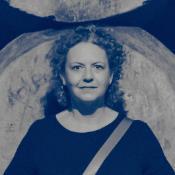Minors
- Art Minor Studio Art Concentration
- Art Minor Art History Concentration
- Community Art Certificate
The creation and analysis of art are vital forms of learning with the potential to transform culture. At Wheaton, whether you choose studio art, art history, or one of the only undergraduate community arts program in the country, you will develop a vision and artistic practice that integrates Christian faith, creative and intellectual inquiry, and active response to the world.
As part of the Art Department, you will experience the support of other Christian artists as you relate your work to your faith. You'll join a community of visionary artist-professors and peers, enjoy honing your artistic craft in our beautifully equipped studios, labs, and galleries, and have opportunities to explore the world-class art, artists and architectural offerings of Chicago - including a FREE membership to the unparalleled Art Institute of Chicago.
/prod02/channel_1/media/art/Wheaton-College-Art-Students-in-Studio.jpg)
 A Retrospective Exhibit for Professor Greg Halversen Schreck
A Retrospective Exhibit for Professor Greg Halversen SchreckAugust 28 to October 4, 2024 Galleries located in Adams Hall and Armerding Hall.
2024-25 Gallery Exhibit Schedule
All full-time faculty are educator/practitioners who work on a regional, national and international scale. Faculty and their respective specialties include:
/prod02/channel_1/media/faculty/Jeremy-Botts-1200X1500.jpg)
/prod02/channel_1/media/faculty/Hooker-David.jpg)
/prod02/channel_1/media/faculty/olivia-js-lee-800X1200.jpg)
/prod02/channel_1/media/art/faculty/Cherith-Lundin-Final-cropped-m.jpg)
/prod02/channel_1/media/faculty/milliner-matthew-1.jpg)
/prod02/channel_1/media/faculty/Joonhee-Park2-1000X1200.jpg)
/prod02/channel_1/media/art/Kaye-Lee-Patton2-1000X1200.jpg)
/prod02/channel_1/media/art/ghs01_2022_web.jpg)
/prod02/channel_1/media/faculty/Taylor-B-Worley-2.jpg)
/prod02/channel_1/media/art/Adams-Hall-Exterior---photo-credit-Tony-Hughes.jpg)
Visit us in
501 College Avenue
Wheaton, IL 60187
630.752.5050
art.department@wheaton.edu
Walford Gallery exhibitions are free and open to the public 9:00am - 4:30pm Monday - Friday.
Interested in studying with the Art Department at Wheaton? Request more information or start your application today.